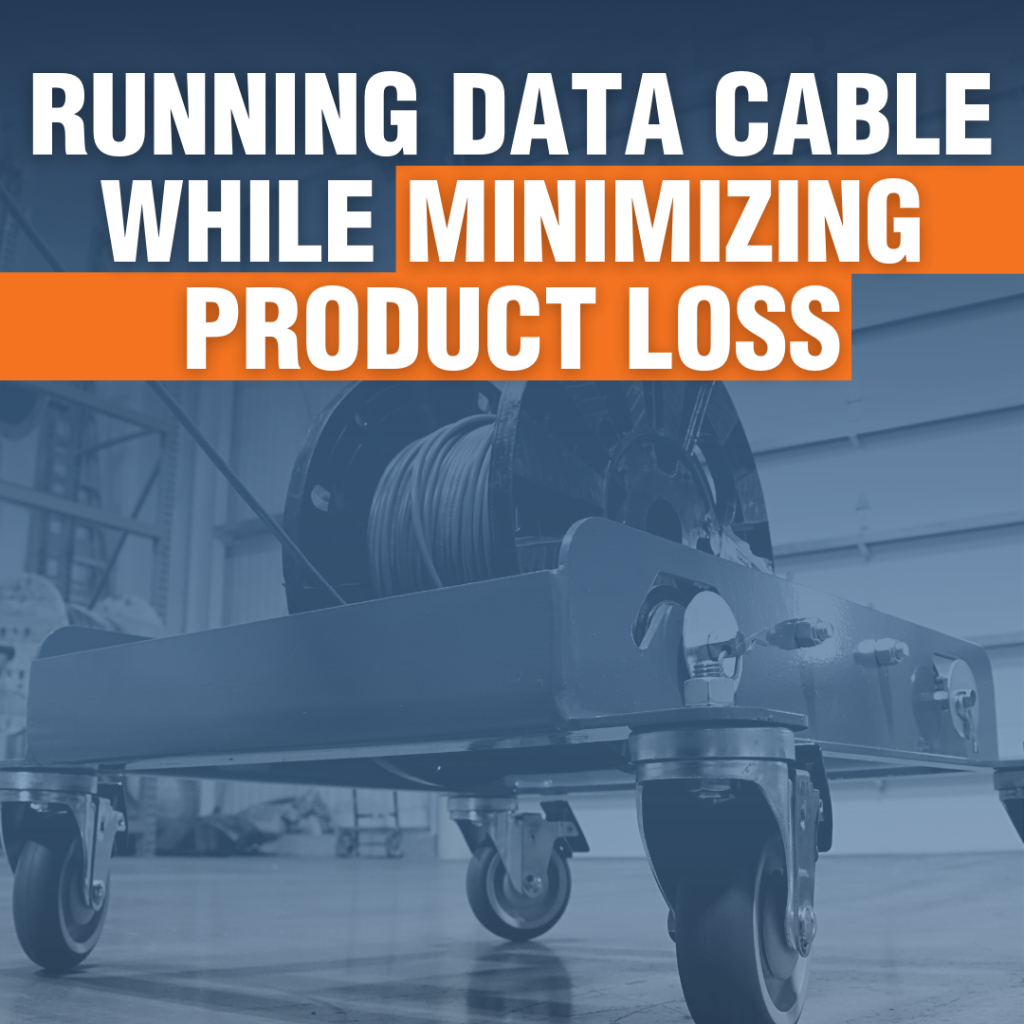We use cookies to make your experience better. To comply with the new e-Privacy directive, we need to ask for your consent to set the cookies. Learn more.
Running Data Cable While Minimizing Product Loss
Running data cable can be a tricky job, particularly in high-volume installations. Electricians may find themselves pulling network cable through branching conduit, complete with difficult twists and turns — and it’s not enough simply to make the pull. Installers must also be careful not to damage cable. Damaged cable can remain hidden all the way up to the certification check, at which point replacement will lead to mounting costs and delays.

Generally speaking, Cat 6 data cable contains more shielding than Cat 5 and Cat 5e, making it a bit more durable during cable pulls. But when you’re running ethernet cable of any kind, it pays to invest in the right training and equipment to avoid product loss during the job. That requires attention to the forces exerted against cables during pulls, including:
- Pull tension. Many sources recommend a maximum pull tension of 25 feet-pounds for ethernet cable, including Category 5 and Category 6. But as with all these recommendations, check the manufacturer’s specifications.
- Variable pulling force. When electricians pull with varying force, the sudden changes in pressure on the cable can cause hidden breakage. To avoid this damage, it’s best to use a uniform pull force — and one that’s consistently lower than the cable’s specified maximum pull tension.
- Bending. Exceeding the manufacturer’s recommended bend radius risks breaking internal conductors, something you may not discover until you test transmission at the end of the installation. A general rule of thumb is that an ethernet cable’s minimum bend radius is eight times its diameter for stationary cables, and twice that for moving cables, which usually adds up to around 1 inch — but, again, it’s best to check with the manufacturer.
- Twisting. Ethernet cables consist of twisted wires within an insulating jacket. Because the twisted wires are already under a low amount of force, twisting the entire cable can cause them to break. In general, the optimal amount of twist during a cable installation is zero.
- Compressive force. Compression of cables can crush the wires inside, leading to failure. Localized compressive force — as when a thin reel flange rolls over a cable — can cut insulation, leading to future failure.
To follow cable specifications and avoid mechanical damage while running data cable, provide your team with cable handling equipment that’s designed for safe, efficient pulls. One such solution is the BHS Reel Taxi™, a data cable payout solution designed to fit virtually anywhere. This portable reel roller platform carries data cable spools with diameters between 12 and 24 inches into tight spaces and narrow aisles. Once it’s in place, the operator can set the foot-activated brake and complete the pull right from the unit; poly-coated rollers with sealed bearings provide an even, smooth rotation that makes uniform pull strength easy to maintain. Meanwhile, smooth poly guards on the interior of the frame avoid damage to the spool — because damaged spools lead to damaged cable.
When you’re running data cable in narrow aisles — as in most data center installations — it’s essential to use cable handling equipment with a small footprint. That’s just what the Reel Taxi provides. To learn more about data-cable solutions from BHS, contact our sales team at 1.800.BHS.9500.
